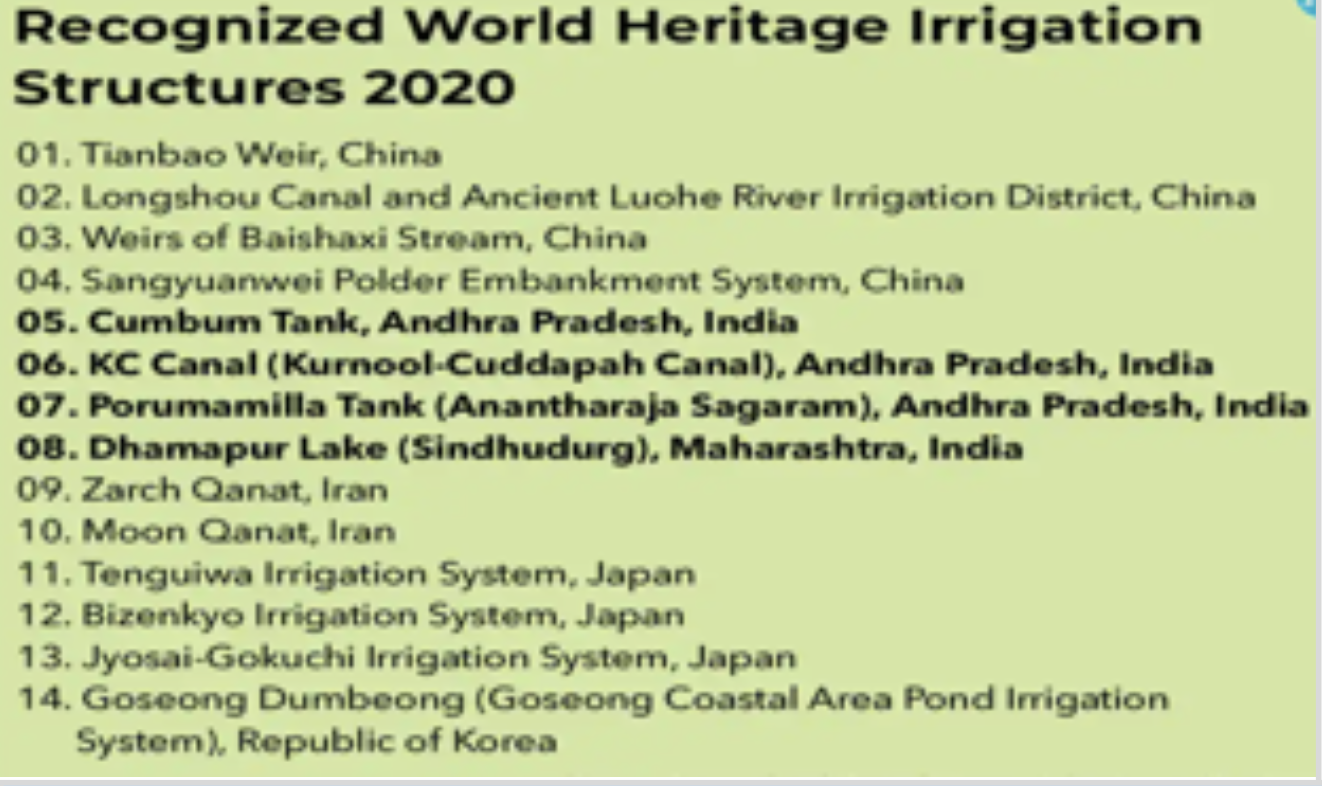These structures have a history of over hundred years
Four sites in India have received the World Heritage Irrigation Structure (WHIS) tag this year. The sites are Cumbum Tank, Kurnool-Cuddapah Canal, Porumamilla Tank (Anantharaja Sagaram) in Andhra Pradesh, and Dhamapur Lake in Maharashtra’s Sindhudurg district.
The other recognised sites this year include four buildings in China, two in Iran, and three in Japan. Why is Irrigation important? Irrigation in India includes a network of major and minor canals from Indian rivers, groundwater well based systems, tanks, and other rainwater harvesting projects for agricultural activities. This helps improves food availability, reduces dependency on monsoons, improve agricultural produce, and offers rural jobs.
The Dhamapur Lake is 490-year-old, and one of the 100 wetlands in India. It is anticipated to be proposed as a Ramsar site (wetland of intercontinental significance).


